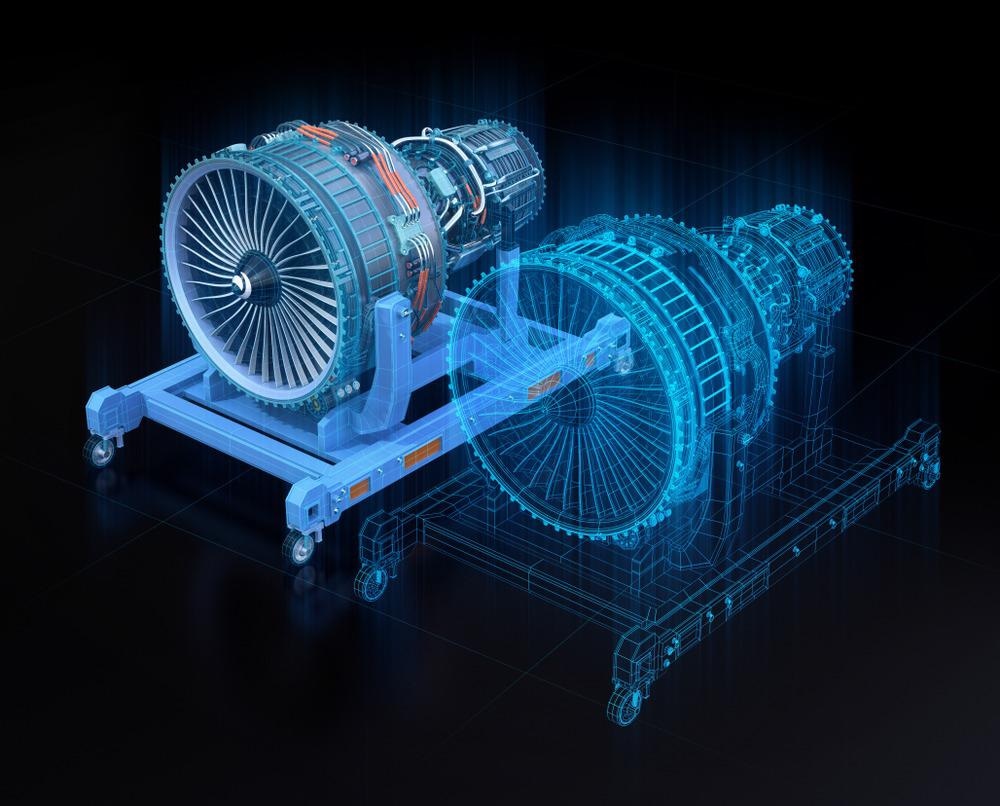So-called “digital twins” are an important, emerging concept in modern industry. The concept is a part of the much-lauded “fourth industrial revolution”, or “Industry 4.0” in some quarters, along with the Internet-of-Things (IoT) and Industrial Internet-of-Things (IIoT).

Image Credit: Chesky/Shutterstock.com
This article looks at how industrial digital twins have been employed in sectors ranging from manufacturing to healthcare in the last ten years, as well as potential opportunities for more industries to take advantage of the concept.
What are Digital Twins?
Digital twins technologies link up a physical machine or entity with a virtual model so that data can flow and integrate into either direction between the twinned entities. Digital twins are a different type of virtual representation from digital models (where no data flows between the physical and virtual version) and digital shadows (where data from the physical entity is recorded and used to update the digital version).
Here, changes to the physical object automatically lead to changes in the digital object and vice versa.
This concept is a key element of the fourth industrial revolution – the wave of modernization in industry in the last few decades that employs smart, connected technology to achieve productivity gains when constructing a product's lifecycle and new ways of working.
The movement is based on the wealth of data recorded by smart technology and shared through IoT connections and devising ways to work with that data to achieve various tangible benefits.
Digital twins are a way of harnessing all of that data, setting artificial intelligence and machine learning algorithms to work to optimize processes, and linking the virtual world of data and optimization with the real world of physical inputs and outputs.
Understood like this, digital twin technologies answer the problem of working with too much data in modern industry. Nearly every function in modern industrial processes can send data to a central database and be controlled automatically.
Digital twins enable process engineers and fault analysts to work on the whole industrial system from the comfort (and algorithmic support) of their desktop computers.
Industrial Digital Twins
The digital twin concept has now spread across many aspects of industry. The first adopters of industrial digital twins were manufacturers, typically quick to respond to technological developments considering the shorter project lifecycles of consumer manufacturing. However, digital twins are now employed in healthcare, civic management, and mining industries.
Industrial Digital Twins in Manufacturing
Manufacturers – who are also typically early adopters of IoT technology and processes – were the first to take up digital twins at industrial scales. An industrial digital twin can be created for most manufacturing processes, with sensors and Internet connectivity fitted to key stages of the physical system, updating the digital twin in real-time.
Digital twins of manufacturing processes provide real-time status updates on individual machines as well as the entire production line. This means that manufacturers can predict issues quickly and algorithmically optimize their operations for productivity and efficiency.
Industrial digital twins also present a low-cost testing option for manufacturers. This means that new tooling and machinery, new product lines, and new processes can be introduced physically with minimal disruption or bedding-in required.
The electric vehicle manufacturer, Tesla, is a pioneering user of industrial digital twins. The company can create a digital twin for an engine or car part and uses these for simulation and data analytics.
What is Digital Twin? How does it work?
Video Credit: Geospatial World/YouTube.com
Digital Twins Technologies in Healthcare
In healthcare, pharmaceutical companies use digital twins to simulate the effect of new drugs. Modern computers can now process vast amounts of data to make accurate pharmacological modeling possible.
As computing power grows even more in the future, the medical field may be able to use industrial digital twins of real, living bodies to enhance healthcare. Surgeons can plan and even perform procedures in the digital twin, with advanced robotics taking the human element out of the equation for a safe operation.
Digital Transformation in Construction and City Planning
In construction, industrial digital twins are a step up from advanced building information modeling (BIM) projects. BIM models are already in use to help engineers and architects work out the structural features of new and existing buildings. Still, these are only digital shadows at best (information only flows from the physical entity to the virtual model, and not the other way around).
Industrial digital twins would remain tied to the physical building before, during, and after its construction. Mechanisms to feed data and analysis back to the physical building include simply giving instructions for construction workers based on the computer modeling and planning logistics, maintenance, and other enabling functions to make the building work.
For city planners, industrial digital twins are linked to the growing “smart cities” movement worldwide. Smart cities use sensors to collect various data on the urban environment, from pollution levels to traffic congestion and public health disparities.
Authorities can use industrial digital twins of their cities to test new policies, optimize network systems like traffic and electricity grids, and identify problems before they arise.
References and Further Reading
Fuller, A., Z. Fan, C. Day, and C. Barlow (2020) Digital Twin: Enabling Technologies, Challenges and Open Research. IEEE Access. Available at: https://doi.org/10.1109/ACCESS.2020.2998358.
Xu, Y., Y. Sun, X. Liu, and Y. Zheng (2019) A Digital-Twin-Assisted Fault Diagnosis Using Deep Transfer Learning. IEEE Access. Available at: https://doi.org/10.1109/ACCESS.2018.2890566.
Yang, C., W. Shen, and X. Wang (2018) The Internet of Things in Manufacturing: Key Issues and Potential Applications. IEEE Systems, Man, and Cybernetics Magazine. Available at: https://doi.org/10.1109/MSMC.2017.2702391.
Disclaimer: The views expressed here are those of the author expressed in their private capacity and do not necessarily represent the views of AZoM.com Limited T/A AZoNetwork the owner and operator of this website. This disclaimer forms part of the Terms and conditions of use of this website.